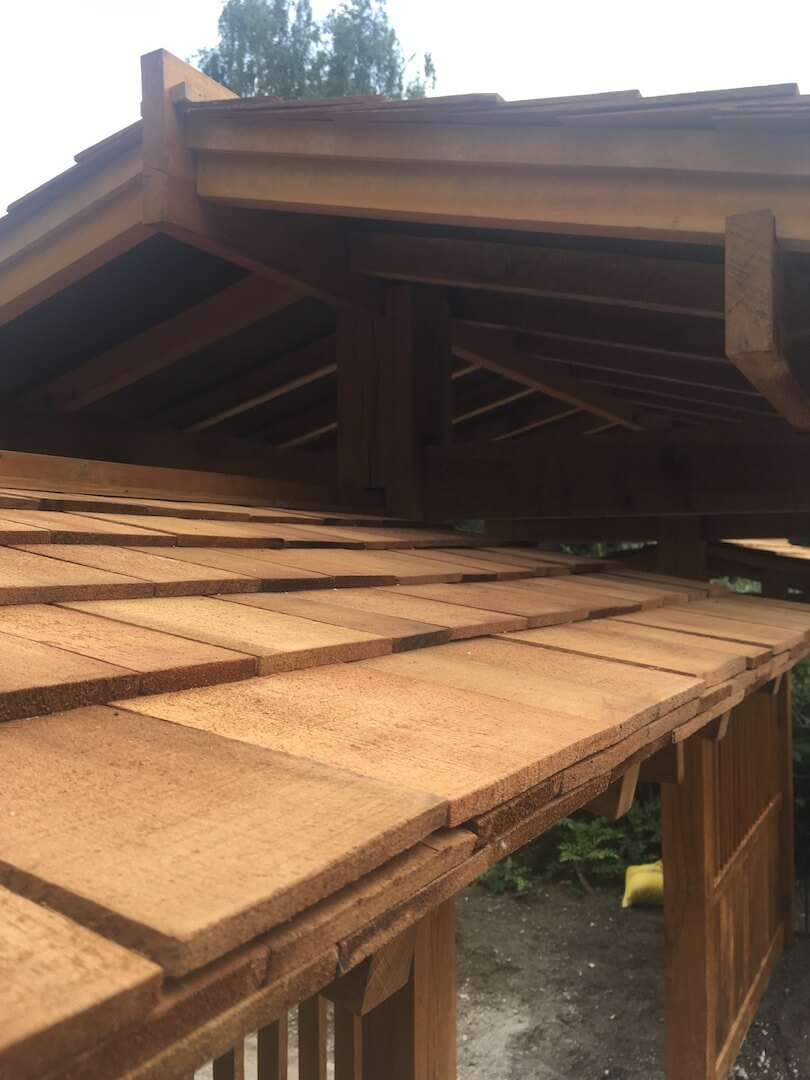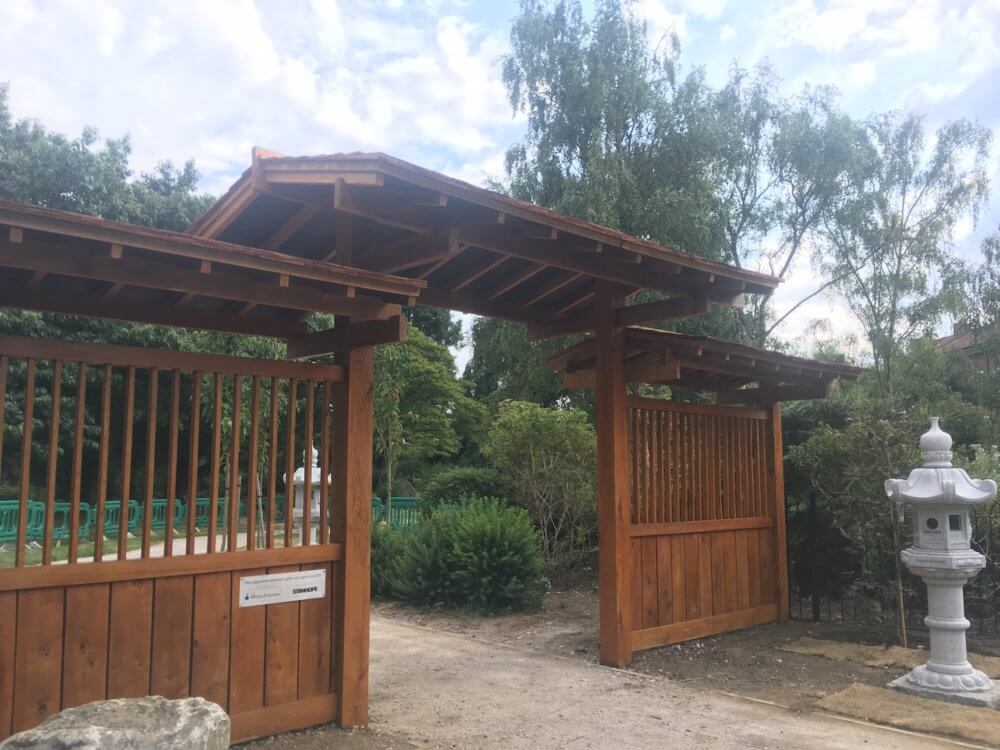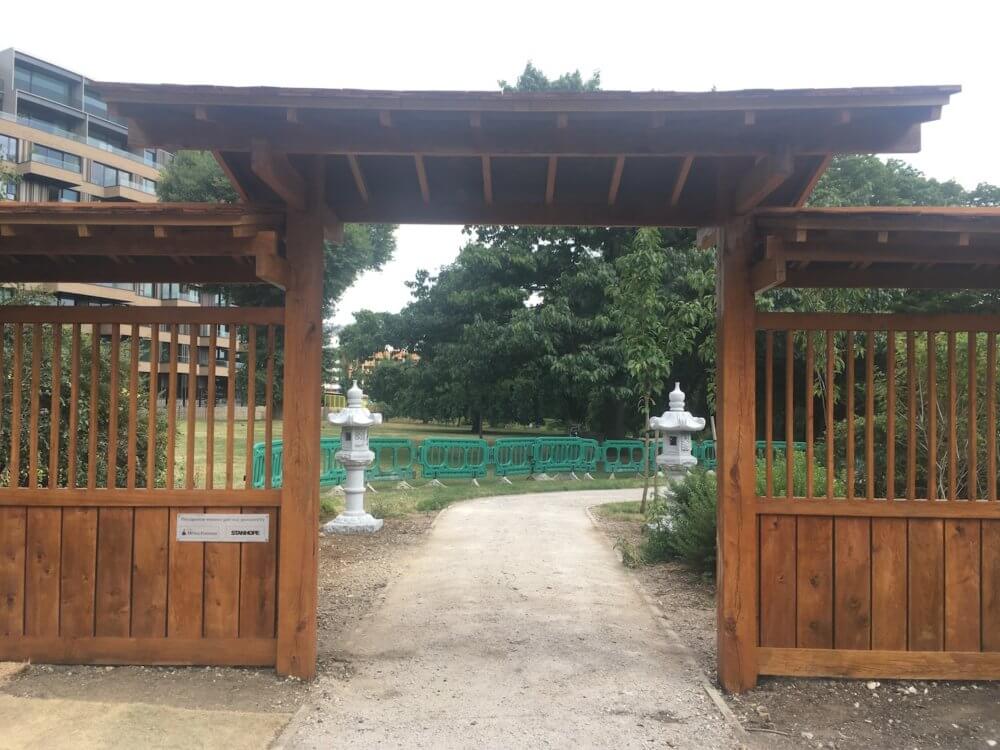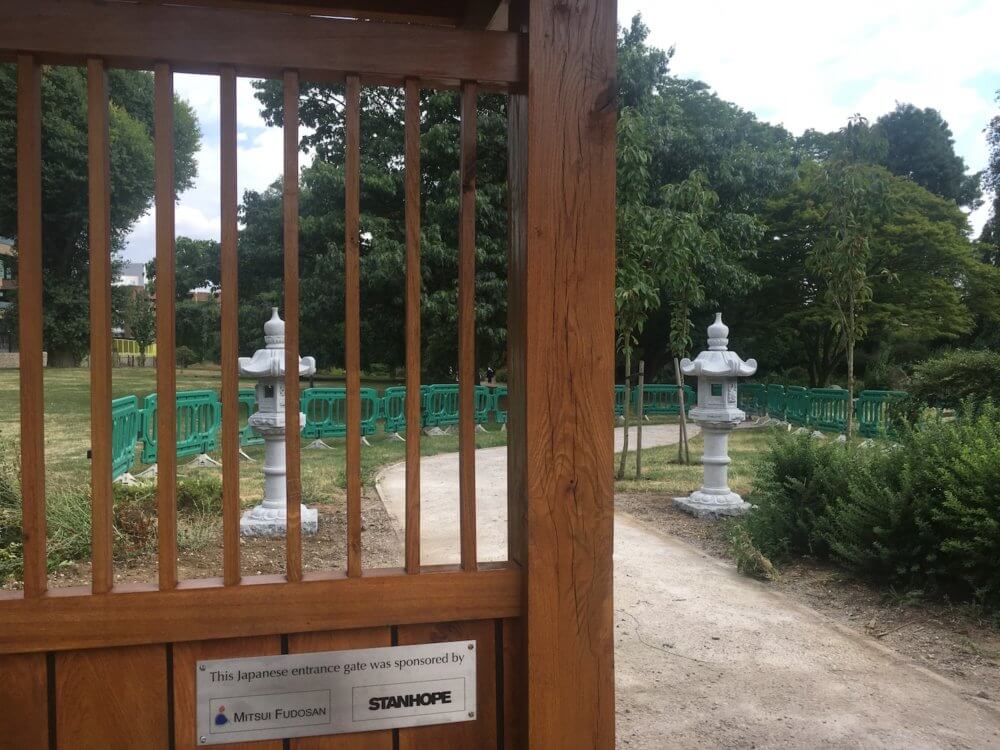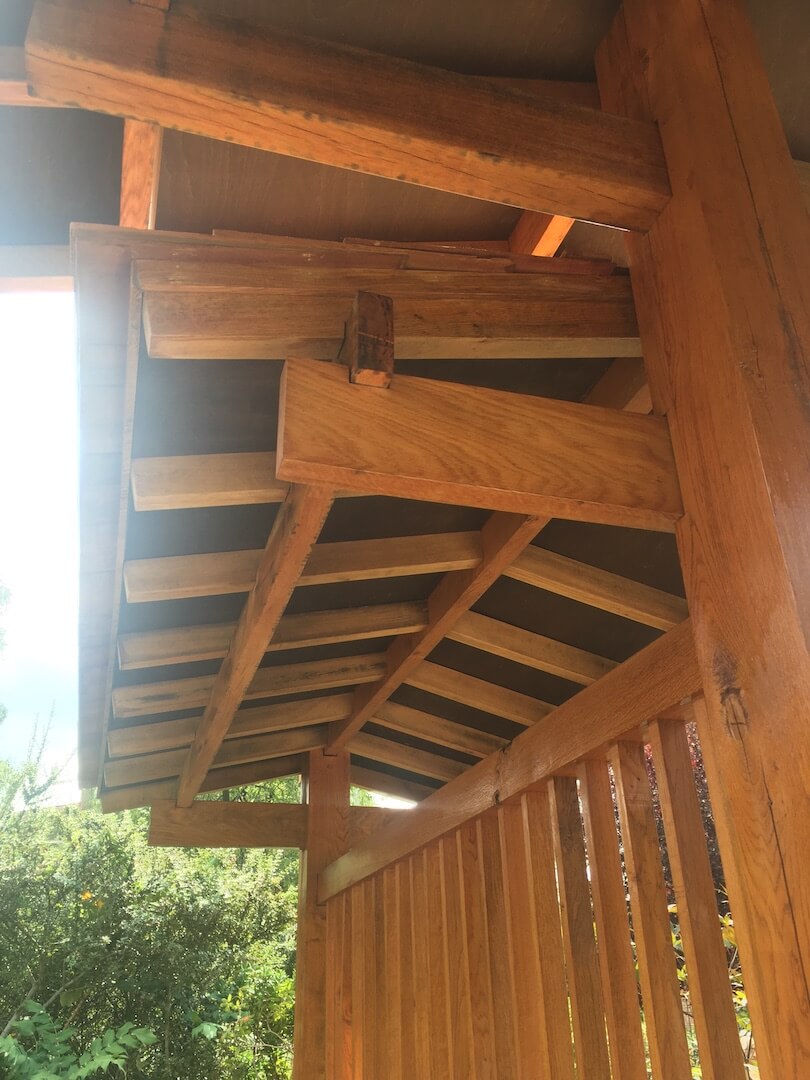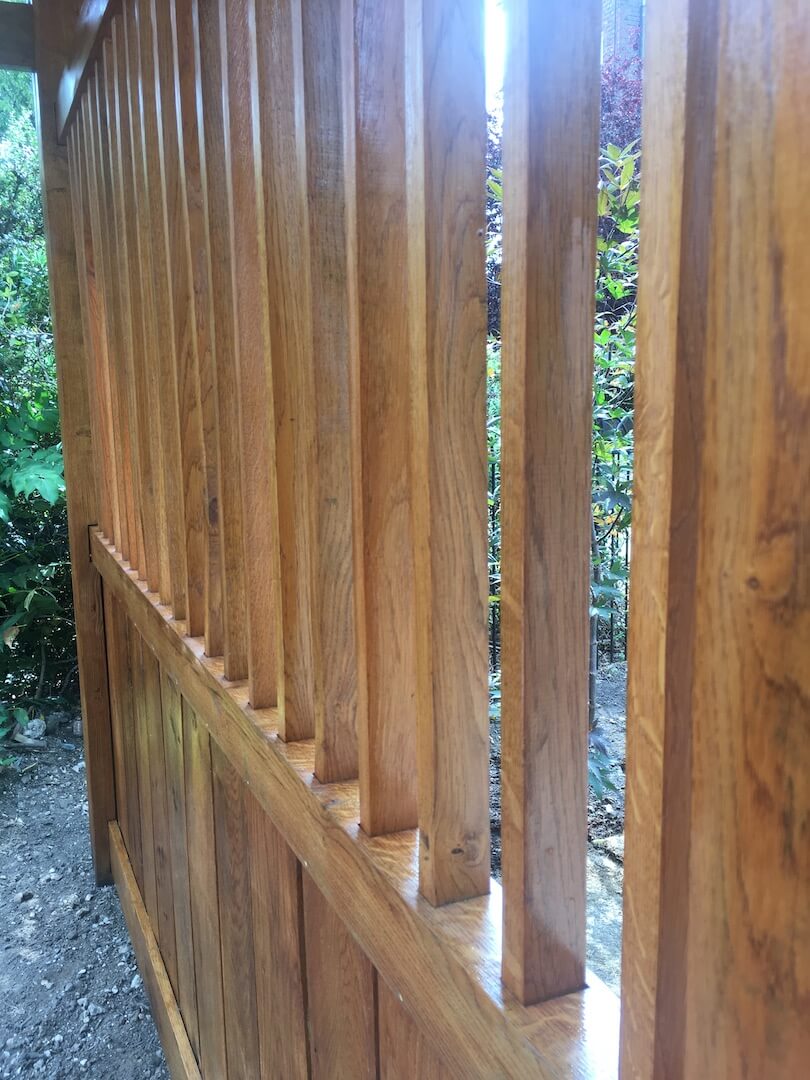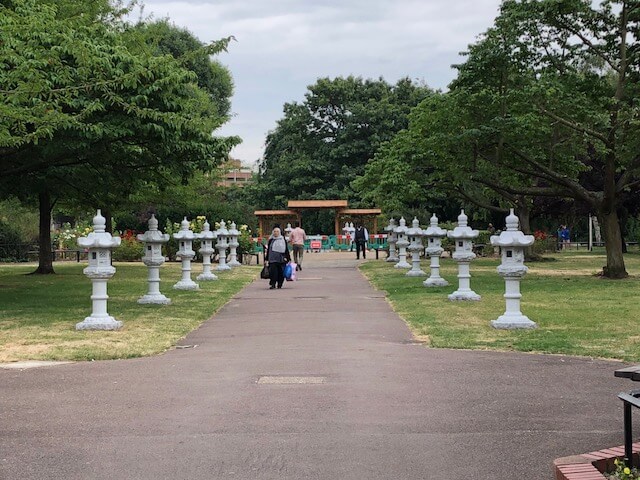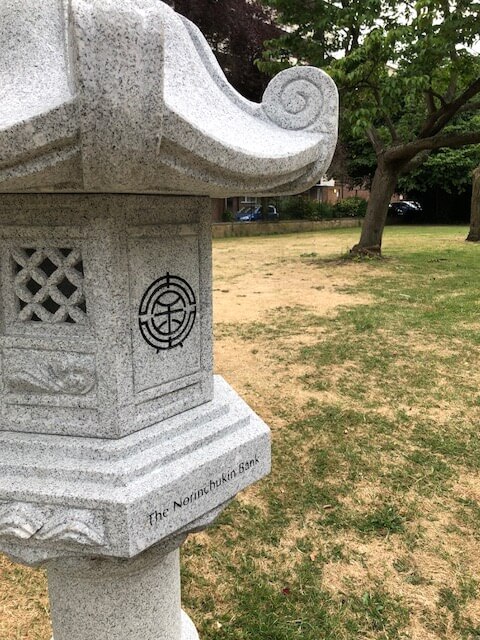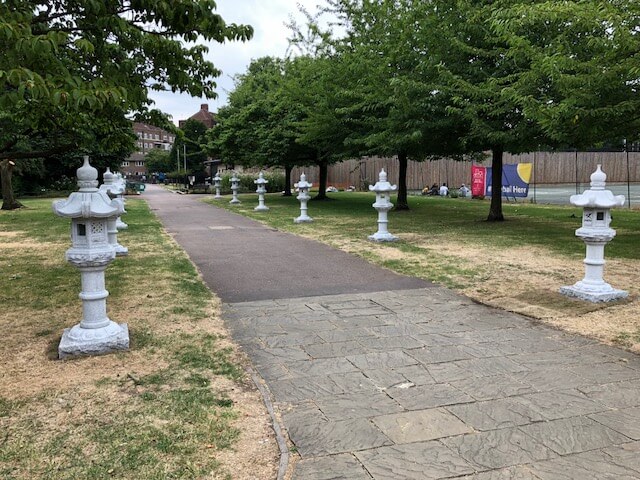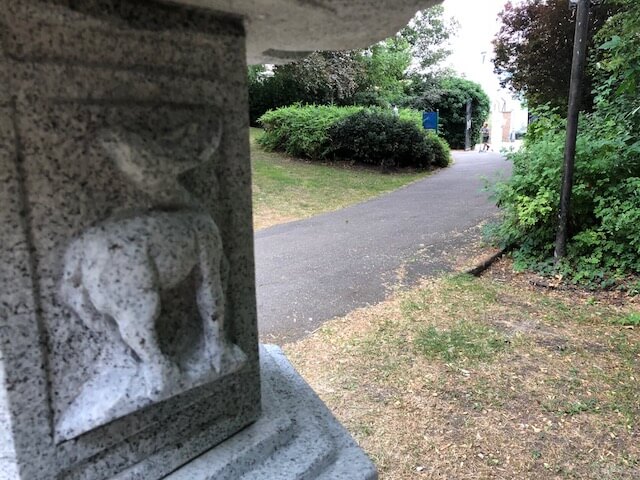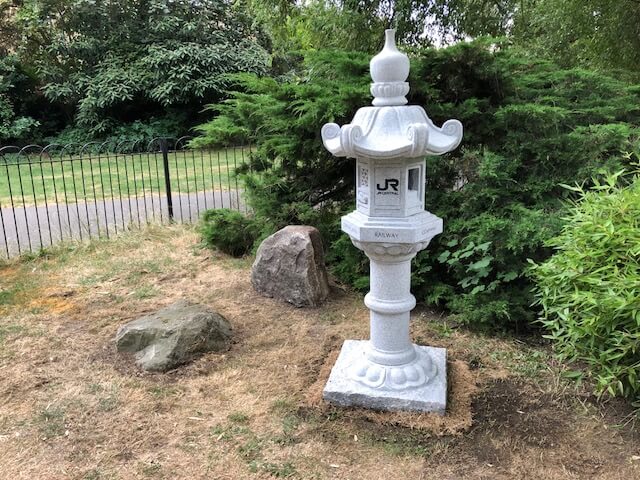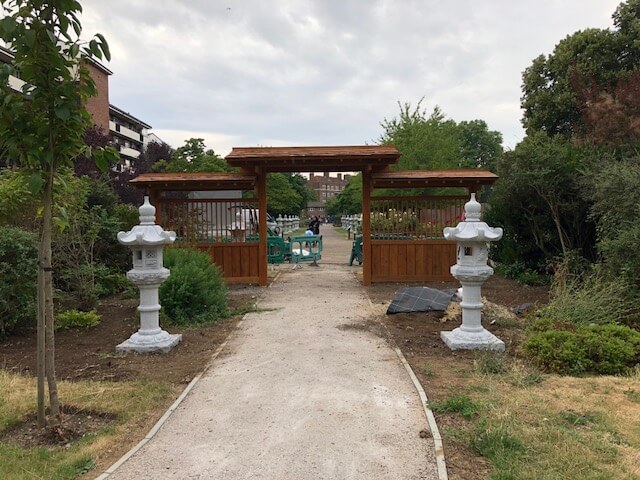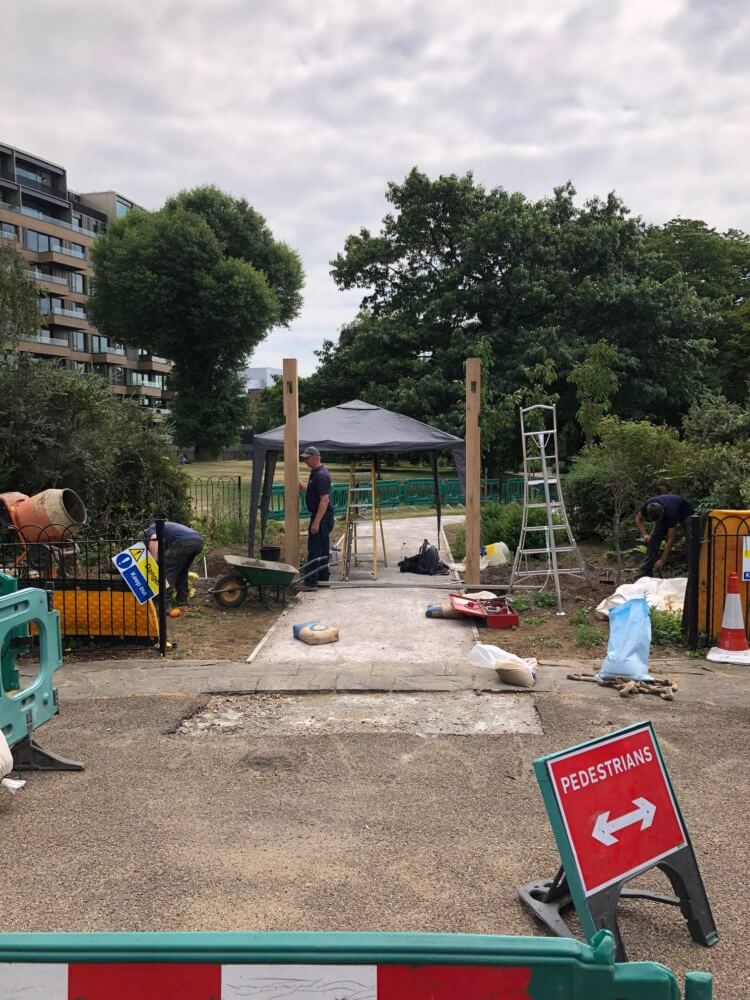About This Project
We were approached by the Friends of Hammersmith Park to work on the project of rejuvenating the Japanese garden that exists within Hammersmith Park, London. The garden was originally built in 1910 as part of the Japan-British Exhibition and is a delightful oasis of calm in a busy urban environment.
Working alongside the Embassy of Japan in the UK, the Japan Society, Hammersmith and Fulham Council and the Japanese Garden Society we were commissioned to build and install a traditional Japanese Entrance gate ( Mon ) leading into the Japanese garden. The gateway was hand crafted from ‘green’ Oak, constructed in our workshops, transported to the park and installed. Twenty Kasuga lanterns, each standing 180 cm high, have been located around the Park with twelve lining the avenue of Japanese Cherry blossom trees leading to the gateway. Each lantern was sponsored by a Japanese company, with their names and logos engraved into the stone lanterns.
The work was undertaken during a two week period on site. We would like to thank all of the people involved in the project, from the Embassy, Local Council and the Friends of Hammersmith Park. We thoroughly enjoyed being involved in the project and hope it brings the residents of White City much joy in the years to come.
Client
Hammersmith Park
Project Date
09.7.18



